Scott #114 is part of the 1869 Pictorial Issue, a series that introduced groundbreaking departures from the traditional stamp designs of the United States. Prior to this issue, stamps almost exclusively depicted portraits of statesmen and allegorical figures.
In 1869, the Post Office Department authorized a new approach that included historical scenes and symbols of progress. The 3-cent value, Scott #114, featured a steam locomotive, reflecting the rapid expansion of railroads that were transforming transportation and communication across the nation.
The 3-cent denomination was the cornerstone of the U.S. postal system at the time, directly aligned with the domestic first-class letter rate. Because of this, Scott #114 was by far the most widely used stamp of the series, and its subject matter represented a striking acknowledgment of the central role of industry and technology in American life.
Design & Print
Scott #114 was produced by the National Bank Note Company, the private contractor responsible for printing stamps under government authorization during this period. Issued in 1869, the stamp was printed in ultramarine ink on hard wove paper.
Like other stamps of the Pictorial Issue, it was impressed with the experimental “G” grill, measuring approximately 12 by 11 points. The grill served as an anti-reuse feature by breaking the fibers of the paper so that cancellation ink would better absorb. The vignette depicts a left-facing steam locomotive, a bold subject compared to the familiar profiles of Franklin and Washington seen on prior issues.
The inscription “United States Postage” runs along the top of the frame, while “Three Cents” is spelled out below. Around 54 million copies were printed, consistent with the heavy demand for the 3-cent rate. The locomotive design stood as an emblem of progress, making this one of the most visually distinctive stamps in the series.
Postal Usage
The 3-cent denomination corresponded exactly to the standard domestic letter rate for up to a half ounce of weight in 1869. This meant Scott #114 was used more extensively than any other stamp in the Pictorial Issue.
Beyond first-class letters, it also appeared on foreign mailings when combined with additional values to meet Universal Postal Union and treaty-based rates, as well as on heavier letters or registered mail that required higher totals.
Because of its central role in the U.S. postal system, Scott #114 circulated in every corner of the country, from major urban centers to developing rural routes. Its issuance coincided with an expanding nationwide rail network, creating a fitting connection between the stamp’s subject and the infrastructure that increasingly carried the nation’s mail.
Identification
Scott #114 can be identified by its ultramarine coloration, horizontal layout, and the prominent steam locomotive vignette. The “G” grill is one of its most defining technical features, visible as a grid of small square pyramids impressed into the paper.
Under magnification or angled light, the grill’s distinct size and spacing can be differentiated from the earlier “F” and later “H” grills. The perforation gauge is 12, in keeping with other stamps of the series.
Specialists focus on the engraving details of the locomotive, particularly the fine linework in the wheels, smokestack, and steam cloud, which were rendered with precision by the National Bank Note Company’s engravers.
Compared with Scott #112 (1-cent Franklin) and Scott #113 (2-cent Pony Express), the locomotive design of Scott #114 is immediately recognizable both for its industrial subject matter and its ultramarine ink, ensuring it is correctly identified as the 3-cent issue of the 1869 Pictorial series.



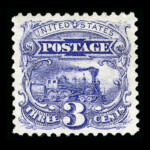
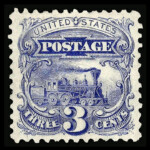
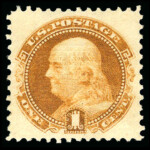
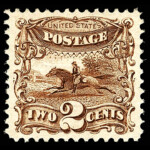
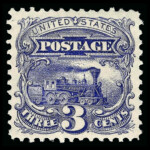
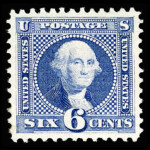
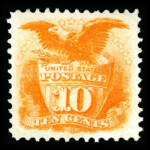

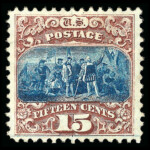
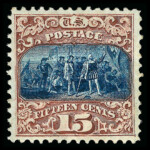

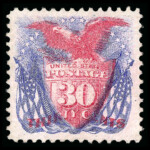













Ask A Question Or Leave A Comment